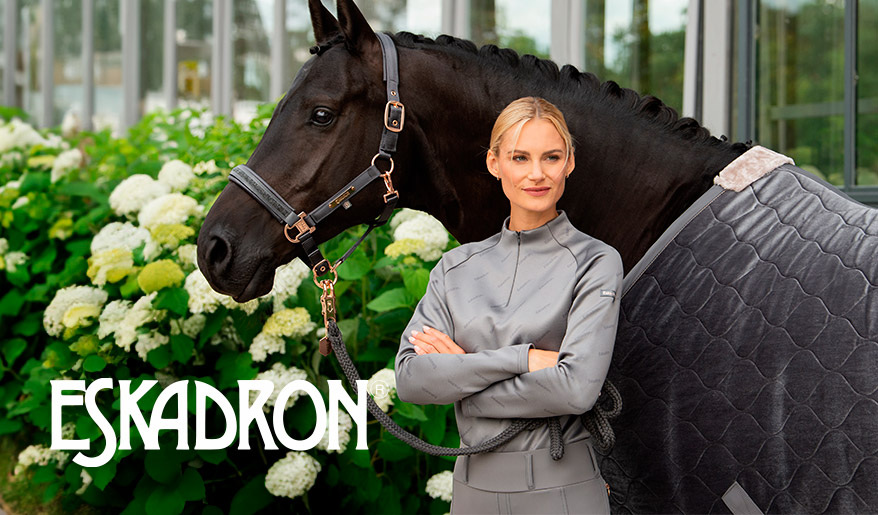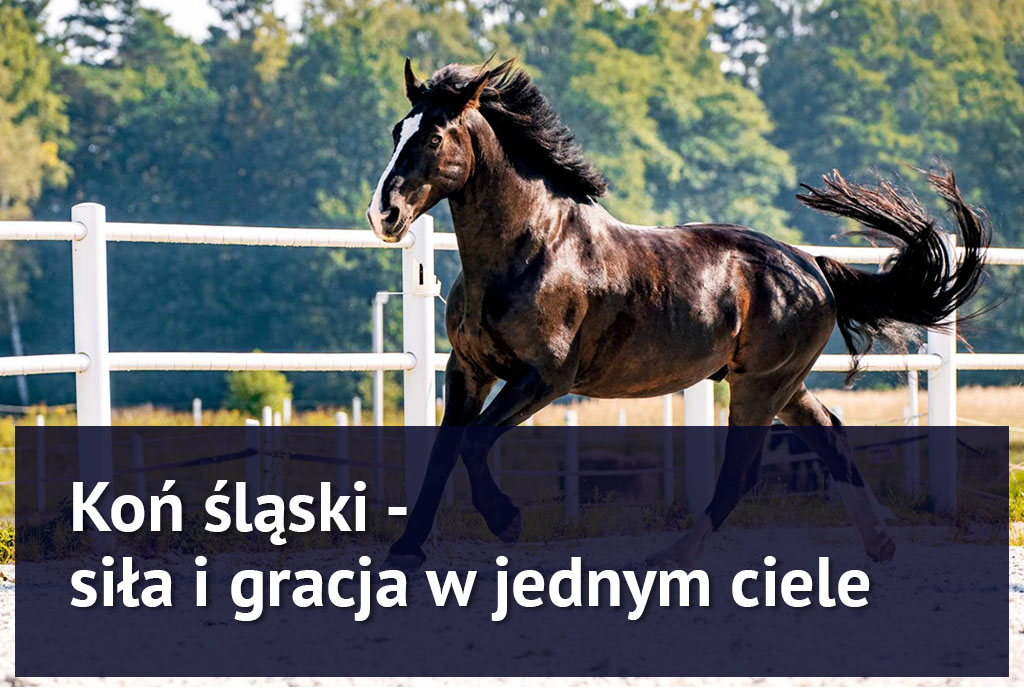
Zdjęcie autorstwa Sylwii Piwoń.
Konie śląskie to jedna z polskich ras, a także jedna z najcięższych ras koni gorącokrwistych w Europie. To silne, masywne zwierzęta o łagodnym temperamencie i wydajnych, eleganckich chodach. Chętnie użytkowane nie tylko w dyscyplinie powożenia, ale również do jazdy wierzchem. Warto poznać ich historię oraz dotychczasowe sukcesy na arenie międzynarodowej.
Koń śląski - historia rasy
Koń śląski, czyli tzw. ślązak wywodzi się z hodowli prowadzonych na terenie Górnego i Dolnego Śląska, początkowo w Książu i Lubiążu w XIX wieku. Rasa powstała dzięki krzyżowaniu miejscowych klaczy z oldenburskimi i wschodniofryzyjskimi ogierami - bardzo masywnymi końmi.
Zupełnie inne środowisko i metody wychowu pozwoliły z dużej domieszki krwi oldenburskiej uzyskać konia o bardziej szlachetnej, suchej budowie, acz nadal dużej masie ciała i sile. Koń śląski świetnie zaspokajał potrzeby rolnictwa i szybko rozwijającego się w tamtym okresie przemysłu. Rasę szczególnie chętnie wykorzystywano w przemyśle wydobywczym do pracy w kopalniach. Ślązaki stały się również popularne nie tylko na Śląsku, ale też w południowo-wschodniej Polsce.
Kolejnym krokiem do podtrzymania rasy koni śląskich była organizacja oficjalnej państwowej hodowli w połowie XX wieku. Prowadziło ją kilka ośrodków:
- stadniny koni: Strzelce Opolskie, Strzegom i Wojanów,
- Stado Ogierów: Koźle i Książ,
- Ośrodek Hodowli Konia Śląskiego zrzeszający prywatnych hodowców.
W latach 70. XX w. Komisja Księgi Stadnej nadała dwa kierunki hodowli tej rasy:
- koń śląski w starym typie – bardziej masywne, bliższe koniom oldenburskim, (w rodowodzie dopuszcza się w trzecim pokoleniu do 4 przodków pełnej krwi angielskiej);
- koń śląski w nowym typie - tzw. angloślązak - o profilu bardziej wierzchowym, lżejszym (do 6 przodków pełnej krwi angielskiej w trzecim pokoleniu);
Obecnie (od 1997 r.) jedynym państwowym ośrodkiem, gdzie hoduje się konie śląskie jest stadnina przy Stadzie Ogierów Książ.
Konie śląskie - budowa i charakterystyka
Konie śląskie różnią się budową w obrębie rasy, ze względu na wspomniane dwa kierunki ich hodowli:
- Koń śląski w starym typie
Konie te mają “dużą ramę”, masywne, ale też i proporcjonalne ciało, bliższe oldenburskim przodkom. Głowa jest również duża, ciężka, a do tego koścista z wyraźnie zaznaczonymi ganaszami. Konie śląskie tego typu mogą mieć również garbonosy profil głowy. Szyja jest zazwyczaj długa, mocno umięśniona, tak samo kłoda. Charakterystyczny jest szeroki, prosty lub lekko skośny zad, dobrze umięśniony. Ślązaki starego typu mają jednak w miarę “lekkie” kończyny: o szerokich nadpęciach i suchych stawach, z dużymi kopyta, acz proporcjonalnymi do całego ciała kopytami. Konie te charakteryzują się energicznym i obszernym stępem oraz elastycznym, posuwistym, wydajnym kłusem.
- Koń śląski w nowym typie - angloślązak
Dzięki dużej dawce pełnej krwi angielskiej w rodowodach tych koni - są one bardziej w typie wierzchowym, lżejszym i szlachetnym. O “lekkości” tego typu decyduje delikatniejsza głowa i dłuższa, bardziej smukła szyja, zdecydowanie bardziej skośny zad i łopatki. Ten typ sprawdza się dużo bardziej jako koń zaprzęgowy, jak i do jazdy wierzchem.
Osiągany wzrost: 160-170 cm
W starym typie - klacze: 158–168 cm, ogiery: 160–170 cm
W nowym typie - klacze: 162–168 cm, ogiery: 164–170 cm
Masa ciała: 680-720 kg
Maść: gniada, ciemnogniada, skarogniada i kara, siwa (rzadko spotykana), inne maści eliminują konia z hodowli
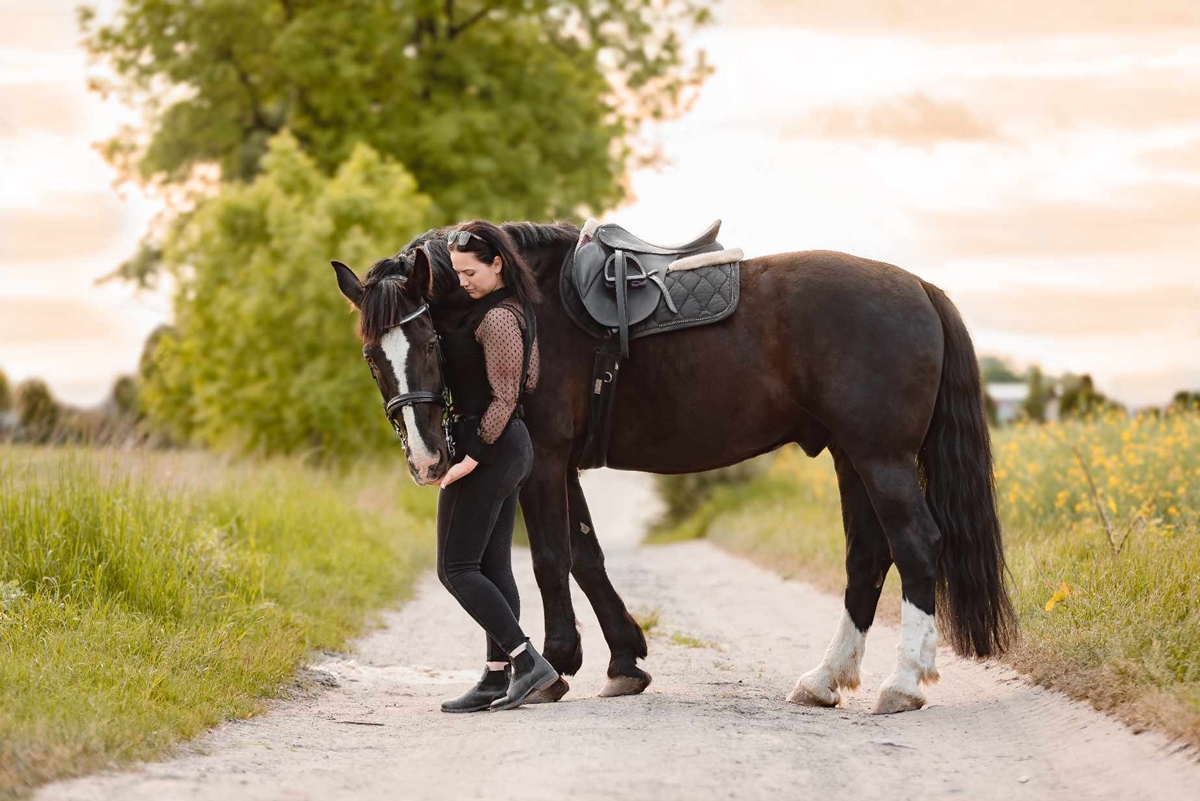
Zdjęcie autorstwa Wiktorii Komendy.
Czy koń śląski to koń zimnokrwisty?
Jak opisywaliśmy powyżej - konie te, mają wśród swoich przodków konie zimnokrwiste, jednakże zalicza się je do koni gorącokrwistych.
Konie rasy śląskiej - użytkowanie
Konie rasy śląskiej starego typu
Świetnie sprawdzają się w zaprzęgu, jednakże nie sportowym. Te zwierzęta świetnie poradzą sobie jako konie, które pomagają w transporcie np. na terenach objętych ochroną (np. w parkach narodowych), gdzie nie wykorzystuje się technologii, a wraca do pierwotnych form, by zagwarantować jak najmniejszą ingerencję człowieka.
Rasa ta, świetnie nadaje się również do rekreacji, dzięki łagodnemu usposobieniu. Co więcej, płynny, miękki ruch konia śląskiego ułatwia “złapanie” rytmu każdego z chodów adeptom jeździectwa. To pozwala na szybsze oswojenie się i poczucie komfortu w siodle. Konie te ze względu na swój niemały gabaryt świetnie poradzą sobie z ciężarem dorosłych mężczyzn.
Konie rasy śląskiej nowego typu
Charakteryzują się lżejszą sylwetką, co pozwala im na większą zwrotność. Świetnie sprawdzają się w powożeniu również dzięki posuwistym, równym chodom. Stąd nie bez przyczyny próby dzielności, wymagane programem hodowli koni tej rasy, sprawdzają właśnie przydatność zaprzęgową.
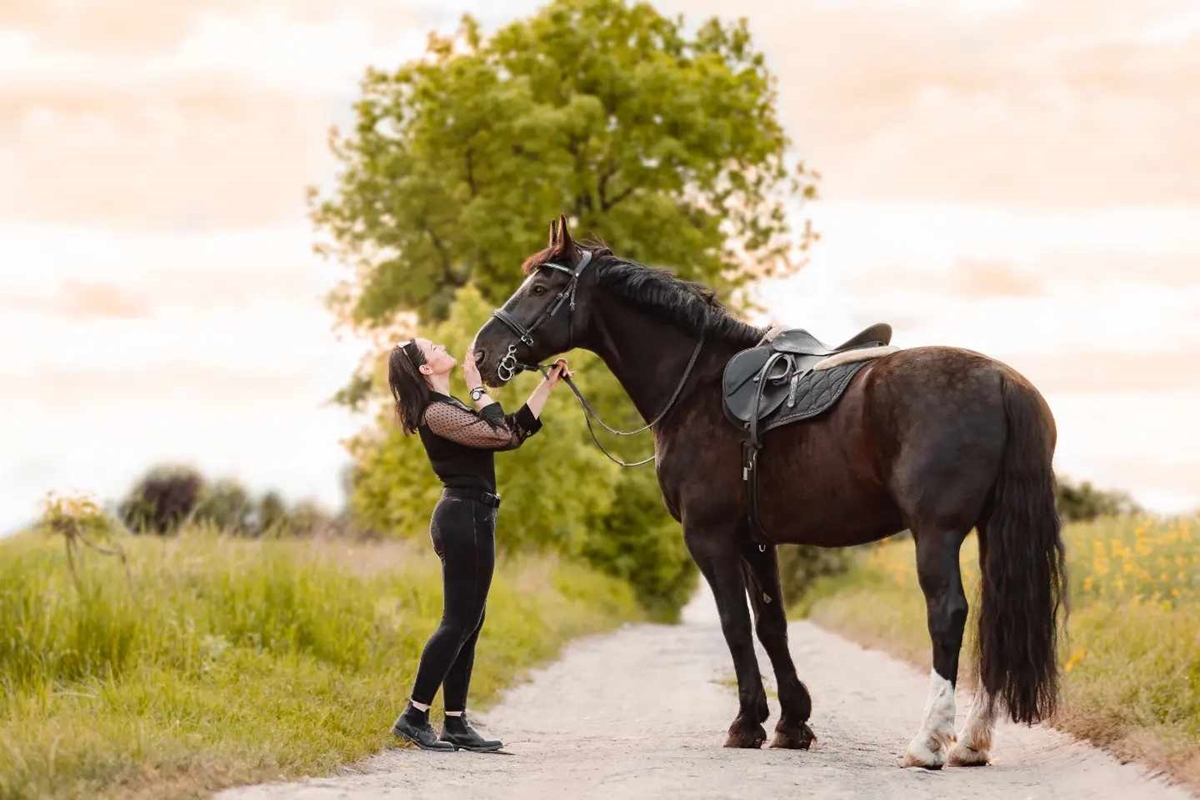
Zdjęcie autorstwa Wiktorii Komendy.
Najważniejsze imprezy w Polsce dedykowane koniom rasy śląskiej:
- Coroczne zaprzęgowe próby dzielności ogierów
- Próby zaprzęgowe dzielności klaczy
- Krajowy Czempionat Koni Śląskich
- Wystawy w Siedlcu, Porębie i Poznaniu w ramach Krajowej Wystawy Zwierząt Hodowlanych Polagra-Farm
W dyscyplinie powożenia koń śląski ma naprawdę sporo sukcesów na arenie międzynarodowej:
- pierwsze z nich należały do koni śląskich (Brener, Brylant, Dolar, Hak, Humus, Leopold, Muszkieter) powożonych w zaprzęgu 4-konnym przez Władysława Adamczak. Udało mu się zdobyć brązowy medal zespołowo na MŚ 1980 w Windsorze oraz brązowy medal indywidualnie i srebrny zespołowo na ME 1981 w Zug
- brązowy medal Czesława Koniecznego na MŚ 1987 w powożeniu parami w Riesenbeck, a także srebrnego zespołowo i IV miejsca indywidualnie na MŚ 1995 w Poznaniu
Inne sukcesy rasy w dyscyplinie powożenia:
- Sonet (hod. SO Książ) z powożącym Bartłomiejem Kwiatek - złoty medal indywidualnie podczas Mistrzostw Świata 2018
- Lokan (hod. SO Książ) również z Bartłomiejem Kwiatek - srebro podczas MŚ 2010 r.
- Bazyli (hod. SO Książ, syn ogiera Lokan) - Mistrz Świata Młodych Koni 6-letnich w Mezohegyes (Węgry) w 2015 r. i brązowy medalista w kat. 7-latków w 2016 r.
- Frezja (hod. SO Książ) z Bartłomiejem Kwiatek - srebro w kategorii 6-latków w 2015 r.
- Epilog (hod. SO Książ, syn ogiera Lokan) z Weroniką Kwiate - brązowy medal podczas MŚMK 2016 (7-letnich)
- Rebelia (hod. SO Książ) z Bartłomiejem Kwiatek - srebrny medal podczas MŚMK 2016 , a w 2017 r. brązowy medal,
- Eter (hod. Jan Wiszniowski) z Weroniką Kwiatek - brązowy medal podczas MŚMK w 2017 r. w kategorii koni 7-letnich
Nowy typ ślązaka to rasa, którą widuje się na czworobokach i parkurach. Podczas treningów skoków warto jednak pamiętać, że konie te nie powinny pokonywać zbyt wysokich przeszkód ze względu na swoją wagę. Kontuzje u skaczących ciężkich ślązaków mogą zdarzać się częściej i być dużo bardziej poważne niż u innych, lżejszych ras. Co ciekawe, konie te dochodziły do poziomu klas N i C, a czasem CC. Swego czasu koń śląski miał stać się rasą wybitnych skoczków na miarę angielskiej rasy hunter.
Możliwości rasy śląskiej sprawdzano również w WKKW (ogier Lanson pod Caroliną Pratt znalazł się w czołówce kadry olimpijskiej).
W dyscyplinie ujeżdżenia konie śląskie kilkukrotnie kwalifikowały się do Mistrzostw Polski Młodych Koni, zdobywając tutuły czempionów (klacz Regentka i Marta Kupska, Bastion i Żaneta Skowrońska, konie Rejent i Dajluk z Darią Kobiernik).
Przodkowie konia śląskiego służyli wojsku jako konie remontowe. Dziś ponownie rośnie zainteresowanie tą rasą wśród polskich służb mundurowych - policji czy też straży miejskiej. Niemały gabaryt, który budzi respekt, a dodatkowo opanowany, łagodny temperament pozwala tej rasie sprawdzać się w ekstremalnych sytuacjach (np. podczas meczów piłki nożnej, gdzie nie brakuje hałasu i tłumów).
Ślązak - koń śląski: cena
Cena konia śląskiego zaczyna się od ok. 15 tys. zł, sięgając nawet 75-100 tys zł.
Podsumowanie
Konie śląskie to zdecydowanie rasa, która zyskuje na popularności, będąc naszym polskim hodowlanym dziedzictwem. Pełne gracji w ruchach, a przy tym niesamowicie silne sprawdzają się zarówno na placach szkółek jeździeckich, jak i na międzynarodowych arenach.
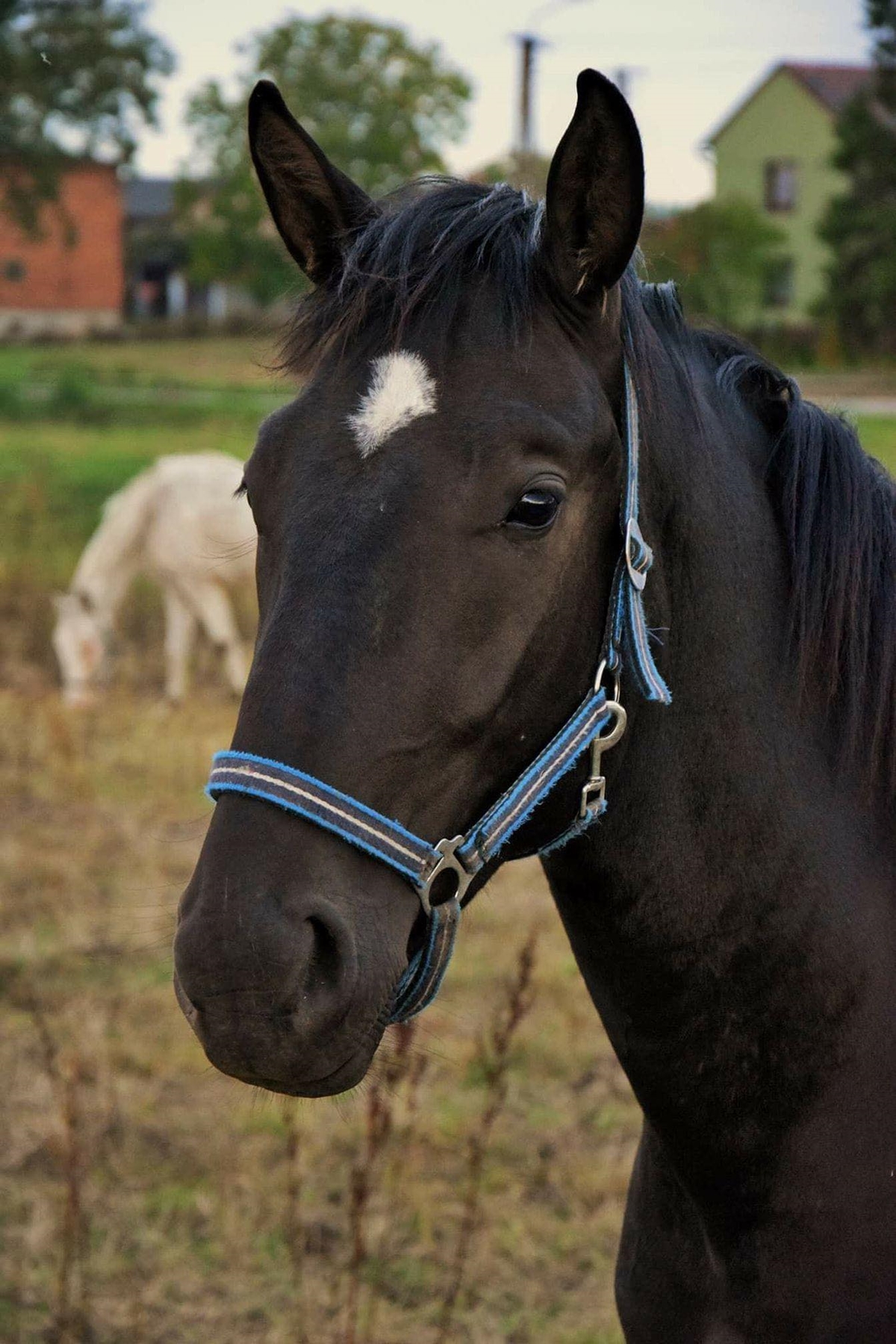
Twoje bezpieczeństwo podczas jazdy konnej zawsze powinno być priorytetem. Koniecznie zadbaj o niezbędną ochronę głowy i odwiedź nasz dział: Kask jeździecki
Sklep jeździecki: +48 784 039 784
Dział siodeł: +48 606 914 300
E-mail: kontakt@equishop.com










